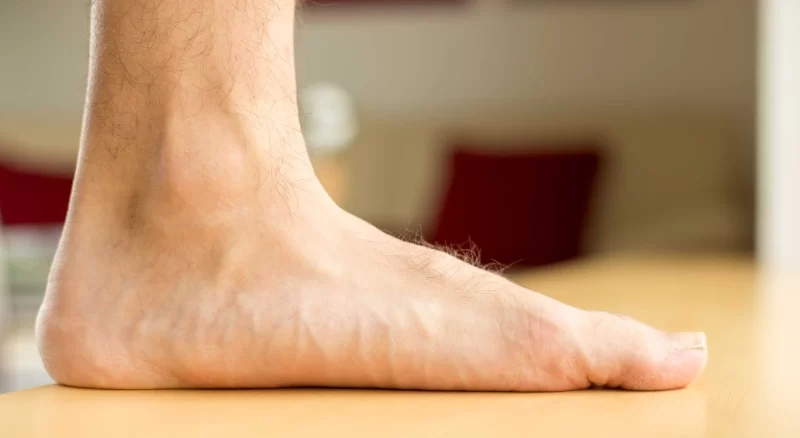One of the common foot conditions that lots of people suffer from is flat feet. As a matter of fact for patients with this condition, the arches on the inward of their feet become flatten. Thus the total soles of their feet will touch the ground when they stand up and walk. Usually patients who have flat feet; their arches don’t grow in childhood, shape because of wear-and-tear pressure of ageing or happen after an accident or injury.
In some cases flatfeet may lead to problems in the ankles and knees since the situation can change the alignment of the legs. Therefore If you have pain in this area, it’s better to visit an ankle surgeon in Dubai.
What does flat feet mean?
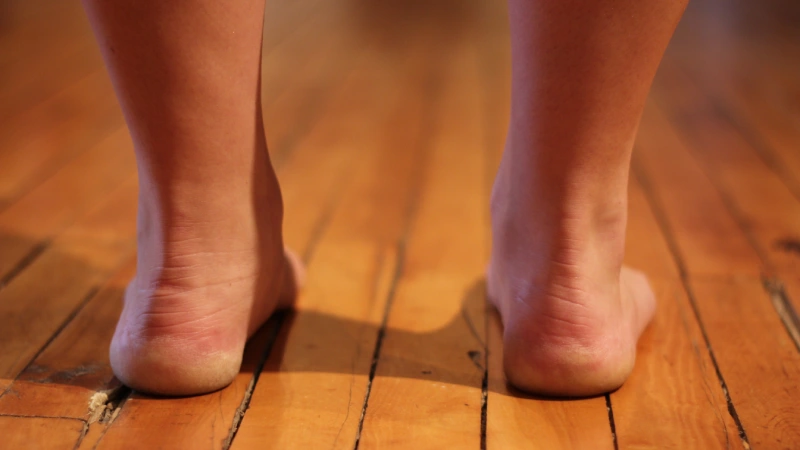
Flat feet, also known as pes planus, is a kind of deformation which happens when the foot arch doesn’t develop since childhood or crumbles and comes into entire or near-entire touch with the ground. In the other word this condition can be innate or developed over time. In case that this foot condition causes difficulty with walking and brings pain to your toes see a big toe surgeon in Dubai in order to examine your condition.
✔️ Read More: What does a hammer toe mean and how is it treated?
There are three types of flat feet that include:
Flexible flat foot
The most usual type of flat foot is this kind. In fact this type begins in childhood and doesn’t bring pain. The feet arches of people with flexible flat feet will just appear while lifting their feet off the ground, and the soles will touch the floor completely when they put their feet on the ground.
Tight Achilles tendon
Because in this type the Achilles tendon links the heel bone to the lower back part of the leg (calf muscle), If this muscle is too tight, a person may experience pain while walking, jogging and running. This situation leads the heel to lift too soon when you’re walking, jogging or running.
✔️ Read More: What is gout? Cause and methods of treatment
Posterior tibial tendon dysfunction
This type of flat foot usually happens in adulthood. In fact if the tendon which links the calf muscle to the inward of the ankle is hurt, inflamed, or torn, posterior tibial tendon dysfunction will happen. This type of flat foot will bring pain on the inside and outside of the foot. The patient may have this problem in one or both feet according to the cause of it.
The flat feet diagnosis usually requires a visual check of the foot, performed by imaging tests. Treatment of flat feet in Dubai might include using pain medicines, supportive devices, foot exercises and in rare cases surgery.
Note: Performing surgery because of flat feet isnt a cosmetic surgery. while smaller toe foot surgery in Dubai is a cosmetic one.
Symptoms of flat feet
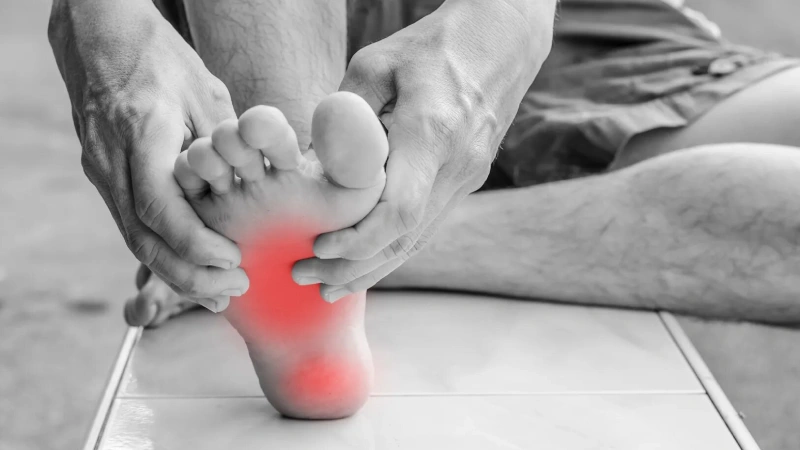
However most patients with flat feet don’t have any signs and symptoms, but some of them feel pain in the midfoot area. The pain will enhance by doing activity and might go along with swelling of the inner ankle and arch. Other symptoms of flat feet include knee, heel and lower back pain.
Gradually, simple motions such as standing on the toes might become intolerable as arthritis further restricts the extent of movement between the bones of the feet. This event could influence the way of walking or running, then cause a characteristic flat-footed gait.
✔️ Read More: Heel spurs, its diagnosis and treatment approaches
Complications of flat feet
No matter what is the cause of flat feet, problems limited area from pain to deformation can happen, including:
- Feeling pain in the arch or heel
- Feeling pain in the back
- Feeling pain in the leg
- Inflammation on the inside bottom part of the feet
- Loss of sensation in the feet or ankles
- Foot tiredness
- Having hammertoes, Bunions, Shin splints, Calluses
Flat Feet in Children
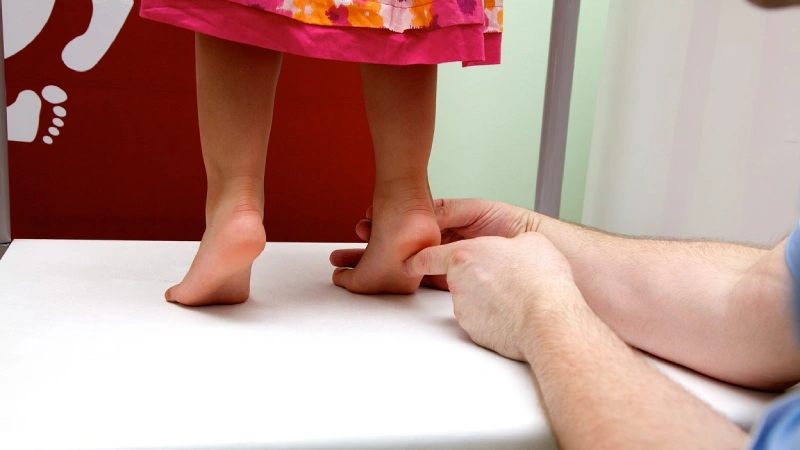
Since the development of feet arches in newborns and toddlers requires time, this condition is very common. However lots of children will grow arches at the age of 3,5 some of them will be postponed or have structural deformation that interrupt with the usual alignment of the foot bones.
Sometimes flat feet are connected with genetic disorders such as: dyspraxia, calcaneovalgus, ehlers-Danlos syndrome, congenital flat foot, ligamentous laxity and hypermobility.
This situation may disappear while a child grows. During growth mutation, shifts in the stiffness of the calf muscles might lead to impermanent flat-footedness.
This situation might just become manifest between maturation and the early teen ages when eccentricities in gait and pronation turn to be more apparent. If flat feet are left untreated, it will progress and get worse in the future.
✔️ Read More: What is arthroplasty? its advantages and disadvantages
What causes flat feet?
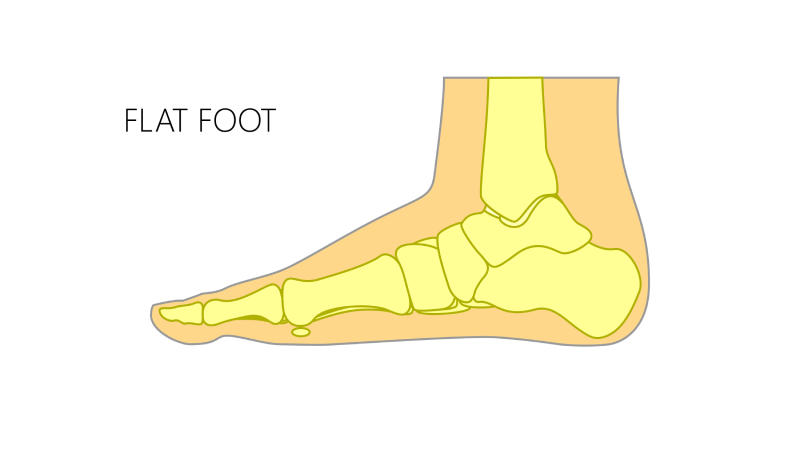
Flat feet are usually connected with extreme turning of the foot. Unlike normal pronation, overpronation happens if the arch is handed down and inward as the feet beat the ground that leads to the severe rotation of the tibia.
For their orientation to overpronate, flat feet will not be able to take shock, putting persistent pressure on the feet, knees, and ankles.
In general this condition is usual in children and toddlers. Because tightening tendons and shaping an arch needs time.
In case that tendon tightening doesn’t happen completely, it leads to flat feet. Furthermore because of aging or getting injuries, the tendons in feet might become damaged.
Treatment of flat feet

There are various treatments of flat feet that include:
Apply foot support
Supporting the harmed feet is usually an initial step for curing the condition.
Your doctor will recommend wearing orthotics. For children with this condition, the doctor might prescribe particular shoes or heel cups till their feet are totally shaped.
✔️ Read More: What is an Achilles tendon and why is it damaged?
Change your lifestyle
In order to decrease the pain of flat feet, changing in lifestyle is essential. As an example, the healthcare provider might suggest a diet and workout program to control the weight to decrease the pressure on the feet.
Taking medicine
According to the reason for the condition, patients might have accepted pain and inflammation. Thus the doctor may prescribe medicine such as nonsteroidal anti-inflammatory to decrease the discomfort and discount inflammation and pain.
Surgery
In rare situations surgery might be needed. So the foot surgeon might make an arch in the feet, fix tendons, or combine the bones or joints.
✔️ Read More: Restless Legs Syndrome and Its Symptoms
Conclusion
If the cause of flat feet is hereditary it won’t be prevented. Despite this, people with this situation can stop the disease from worsening by wearing suitable shoes. Fortunately flat feet can be treated by taking medications, wearing supportive devices and rarely surgery. In sum if you observe any signs of this foot condition, make an appointment with a foot surgeon in order to prevent future complications.


